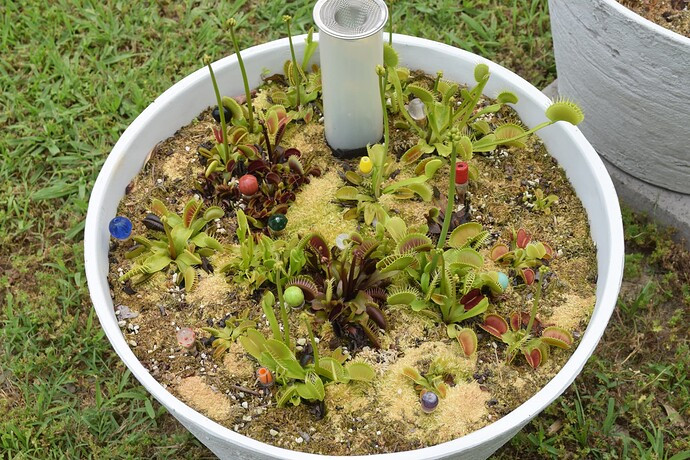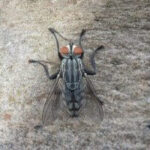Venus fly traps are fascinating carnivorous plants that captivate plant enthusiasts worldwide. While they might seem exotic and challenging to care for, understanding their basic needs can ensure these unique plants thrive in your home or garden. This guide provides essential tips on How To Take Care Of Venus Fly Traps, drawing from practical experience to help your plants flourish.
Choosing the Right Pots and Soil for Your Venus Fly Trap
Selecting the appropriate pot and soil is crucial for the health of your Venus fly trap. Deep pots are highly recommended, ideally 6 inches or deeper. Deeper pots offer several advantages: they retain moisture for longer periods and help protect the roots from overheating, especially during hot summer months.
For pots up to 8 inches, dog watering bowls can be repurposed as effective self-watering solutions. Simply fill the bowls with water and allow the soil to absorb moisture from the bottom up. This method, known as bottom watering, helps maintain consistent soil dampness, which Venus fly traps prefer. Depending on the heat and rainfall, you’ll generally need to replenish the water in the bowls two to three times a week.
For larger pots exceeding 8 inches, consider utilizing a water reservoir or bog pot method. This can be achieved by sealing the bottom of a pot and drilling drainage holes at a specific height along the side. Adding a plastic pipe allows you to easily pour water directly into the reservoir, ensuring the soil remains consistently moist without becoming waterlogged. Pots with removable bottom plugs are particularly useful for managing drainage and preventing overly soggy conditions.
 Healthy Venus fly trap growing in a deep pot, illustrating proper pot size for carnivorous plant care
Healthy Venus fly trap growing in a deep pot, illustrating proper pot size for carnivorous plant care
Watering Venus Fly Traps: Maintaining the Right Moisture Balance
Consistent moisture is key to successful Venus fly trap care. The goal is to keep the soil consistently damp, but not waterlogged. Allow excess water to drain freely and avoid letting your Venus fly trap sit in standing water for prolonged periods, as this can lead to root rot and other issues. Unlike some carnivorous plants like Sarracenia, Venus fly traps are not adapted to constantly soggy conditions.
Watering frequency will depend on environmental factors such as temperature and humidity. In hotter weather, you may need to water more frequently, possibly two to three times a week, to prevent the soil from drying out. Always use rainwater, distilled water, or reverse osmosis (RO) water to water your Venus fly trap. Tap water and mineral water contain salts and minerals that are harmful to these sensitive plants.
The Benefits of Mulching with Sphagnum Moss
Applying a layer of milled long-fiber sphagnum moss as mulch is highly beneficial for Venus fly traps. This natural mulch helps to retain precious soil moisture, reducing the need for frequent watering. Sphagnum moss also aids in regulating soil temperature, keeping the roots cooler during hot summer days. This is especially important as overheating roots can stress or even kill Venus fly traps.
Winter Care for Venus Fly Traps: Cold Dormancy
Venus fly traps are surprisingly cold-hardy and require a period of winter dormancy to thrive long-term. They can tolerate temperatures as low as 25°F to 32°F (-4°C to 0°C) without significant issues. While they can withstand brief periods even colder, prolonged exposure to temperatures below 25°F can be risky. If you live in an area with harsh winters, covering your Venus fly traps with a few inches of snow can provide insulation and protection from extreme cold.
In summary, successful Venus fly trap care involves choosing deep pots, maintaining consistently damp (but not soggy) soil with appropriate watering techniques and water type, using sphagnum moss mulch, and ensuring a cool winter dormancy period. By following these guidelines, you can enjoy the unique beauty of these carnivorous plants for years to come.
